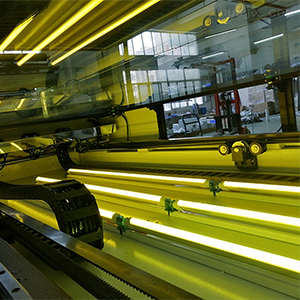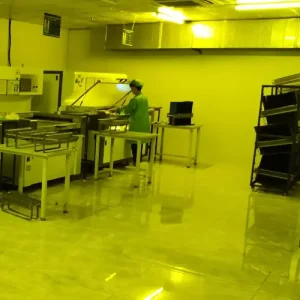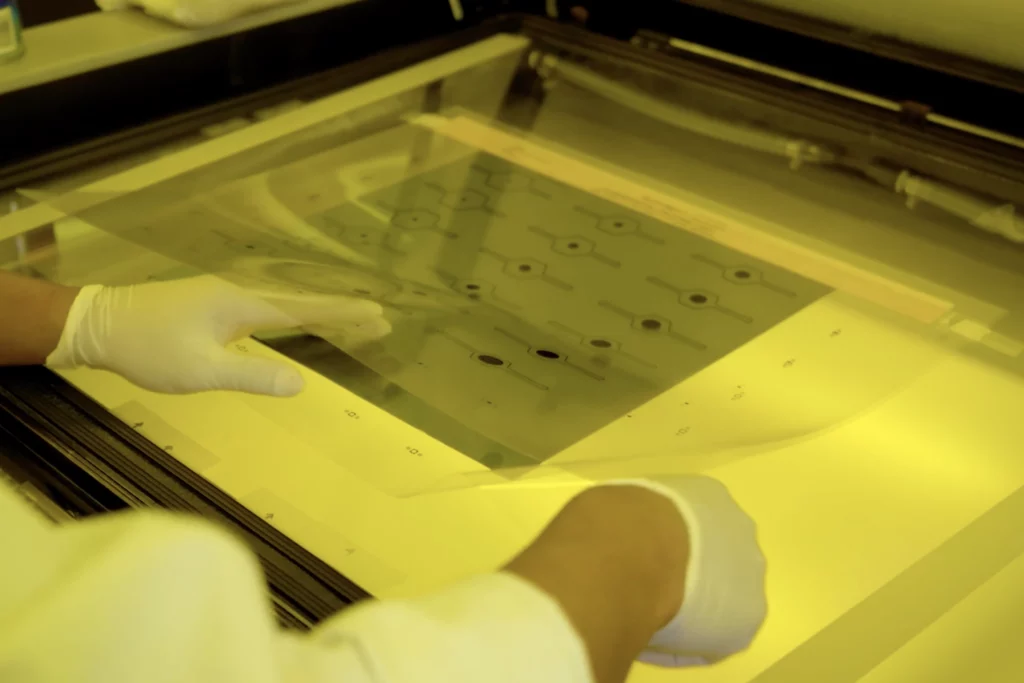The etching process has greatly transformed the manufacturing sector due to the formation of various products that can be manufactured through etching techniques. In everything ranging from aerospace parts to microelectronic components, the selection of the etching technique affects yield, throughput, and productivity. Among the Popular methods, continuous reel-to-reel etching and traditional photochemical etching stand out for their unique features and applications. But how is each different and which would be better in your case? Let’s dive in.
What is Etching?
Etching is a manufacturing process of removing material from the surface of an object using chemicals, physical force, or electricity. It originated for ornamental use in the 15th century but has become a key manufacturing method.
Applications of Etching
Today, etching is used in industries such as:
- Aerospace
- Electronics
- Automotive
- Medical devices
The Basics of Traditional Photochemical Etching
Conventional photochemical machining is a process of material removal through pattern and etching solution on a photoresist. It is extensively applied in metallic thin slices designing intricate patterns and shapes of designs.
Key Characteristics:
- Comes with the use of the photoresist mask.
- Incorporates the use of chemical solutions to reduce material content.
- Suitable for small to medium-batch production and short-run fabrication.
Applications:
- Electronic components including printed circuit boards.
- Aerospace parts
- Decorative designs
Introduction to Continuous Reel-to-Reel Etching
Continuous reel-to-reel etching is a highly automated, high-precision process designed for flexible rolled materials such as stainless steel and copper coils. This method enables the processing of materials to be conducted continuously through automatically operated systems.
Key Characteristics:
- Automation and perfection and success rates.
- Ongoing supply chain with no end-to-end transfer.
- For use in production where there is a large number of people to cater for.
Applications:
- One major type is large-volume electronic parts.
- Automotive parts.
- Flexible printed circuits.

Reel-to-Reel Etching Vs. Traditional photochemical etching: Main Differences
There are the following differences between continuous etching and ordinary etching in etching processing:
Production Method:
Continuous etching is a very accurate process and is used almost entirely on flexible rolled goods such as stainless steel and copper coils. It also uses mechanical, and automated roll-to-roll transmission functions that function without human interference.
In ordinary etching, however, the etching process is carried out manually, where each material or component is put separately into the etching solution.
Degree of Automation:
Continuous etching is highly automated to allow roll-to-roll for seamless transfer, which reduces changes in direction, manual transfers, time, and costs. The major difference is that ordinary etching is not as automated as H-etching because it involves simple handling .
Production Efficiency:
Continuous etching is more efficient due to its nature of not being interrupted by a break in processing. Ordinary etching is slower and requires more manually owned operations although it is effective for small-scale production.
Application Range:
Continuous etching is particularly effective in large-scale high-volume, and high-precision surface finishing applications in flexible rolled materials. As to ordinary etching, it is more diverse can work with a larger variety of metal materials, and is more suitable for the smaller-scale tasks.
Benefits of the Traditional Photochemical Etching
Flexibility with Prototypes:
Most ideal for custom design and for those who want to make only a few pieces.
Cost-Effectiveness:
This is perfect for prototyping because there is little upfront cost in setting everything up.
High Precision:
Can create complex designs and small design elements in work.
Advantages of Continuous Reel-to-Reel Etching
Efficiency for Large-Scale Production:
Single operation supports large scale projects.
Reduced Material Waste:
Continuous processes reduce potential errors of handling.
Cost-Effective for High Volumes:
Ideal for any industry that requires frequent high standards of production.
TMN Photochemical Etching Factory: A Leader in Etching
If you are looking for a quality etching factory, TMN Photochemical Etching Factory is one of the best. Known for its advanced techniques, high-precision manufacturing, and commitment to quality, TMN sets a benchmark in both traditional photochemical etching and continuous reel-to -reel etching. Such specialization places them in a good position to be industries’ choice of partners globally.

Continuous reel-to-reel etching and traditional photochemical etching offer distinct advantages, depending on production needs. Although the traditional etching technique has proved to be flexible and highly accurate for small-scale work, continuous etching is a preferred method, particularly for large- scale production that incorporates automation.
Thus if you know your requirement in terms of volume, type of material, and tolerance required it can lead you to the most appropriate etching process.
FAQs
What materials can be used in these etching processes?
Common materials include stainless steel, copper, aluminum, and other metals used in industrial and electronics applications.
Is reel-to-reel etching more cost-effective than photochemical etching?
For high-volume production, reel-to-reel etching is often more cost-effective due to its automation and reduced material waste.
Which industries rely on continuous reel-to-reel etching?
Industries like electronics, automotive, and aerospace frequently use continuous reel-to-reel etching for mass production of components.
Can both methods achieve similar precision levels?
Yes, both methods offer high precision, but traditional photochemical etching is often preferred for intricate, small-scale designs.
How does the environmental impact of these methods compare?
Continuous etching reduces waste and energy usage per unit, making it a more sustainable option for large-scale production.

